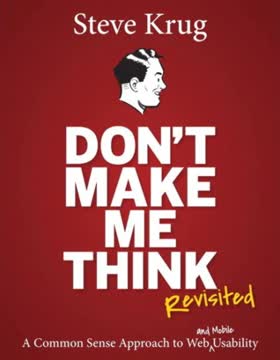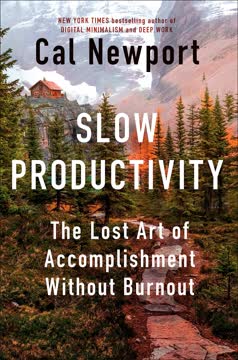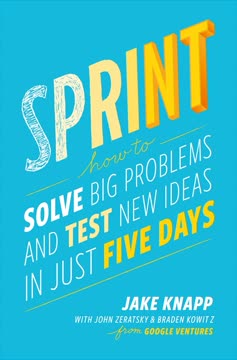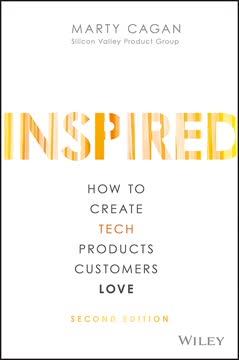Key Takeaways
1. Product Operations: The Force Multiplier for Scaling Product Management
Product operations is the discipline of helping your product management function scale well—surrounding the team with all of the essential inputs to set strategy, prioritize, and streamline ways of working.
Enabling strategic decisions. Product operations acts as a force multiplier for product teams by providing the infrastructure needed to make evidence-based decisions and align the company around them. It addresses common challenges such as lack of data visibility, inconsistent processes, and poor cross-functional communication.
Scaling product management. As companies grow and product portfolios expand, product operations becomes crucial in maintaining efficiency and effectiveness. It helps break down silos of information and capabilities that arise at scale, ensuring that all departments understand their impact on the product lifecycle. By taking on administrative tasks and streamlining processes, product operations allows product managers to focus on core responsibilities like achieving business goals and creating customer value.
2. Three Pillars: Data Insights, Customer Research, and Process Governance
At its core, product operations is an enablement function. Think of it as the product manager for the product manager.
Data and Insights. This pillar focuses on collecting and analyzing internal data to inform strategy creation and monitoring. It provides leaders with a view that tracks the progress of outcomes and helps reconcile R&D spend and ROI.
Customer and Market Insights. This pillar facilitates the aggregation of external research, including customer feedback and market trends. It streamlines the process of gathering and disseminating user insights and competitive analysis.
Process and Practices. This pillar scales product management value by establishing consistent cross-functional practices and frameworks. It defines the product operating model, specifying how the company creates and deploys strategy, how teams collaborate, and how the product management function operates.
3. Leveraging Data for Strategic Decision-Making in Product Development
Data tells a story. Well, maybe not the data itself, but in the hands of an experienced product manager who knows how to extract the right data for the right audience, it can be the difference between listening to an improv show, where there's no consistent theme or plot, and a Best Picture winner at the Oscars.
Contextualizing data. Product operations helps filter data through a product lens, providing evidence to support strategic decisions. This includes analyzing metrics such as product profitability, usage patterns, customer KPIs, and market opportunities.
Informing strategy. By aggregating data from various sources (sales, finance, customer support), product operations creates a holistic view of product performance. This enables product teams to:
- Identify trends and opportunities
- Validate hypotheses
- Prioritize initiatives based on potential impact
- Monitor progress towards strategic goals
Automating insights. Product operations works to implement systems that provide real-time data access, allowing for faster decision-making and strategy adjustments. This may involve setting up dashboards, implementing business intelligence tools, and creating regular reporting cadences.
4. Streamlining Customer and Market Insights for Informed Product Strategies
Research initiatives are worth absolutely nothing if the product team can't use the outputs.
Centralizing customer feedback. Product operations helps aggregate insights from various touchpoints (sales, support, user research) to create a comprehensive view of customer needs and preferences. This involves:
- Setting up systems to capture and categorize feedback
- Creating processes for sharing insights across teams
- Establishing a central repository of research findings
Enabling efficient research. By streamlining the logistics of customer research, product operations removes barriers that often prevent product managers from engaging directly with users. This includes:
- Creating user research councils or panels for easy access to participants
- Implementing tools for scheduling and conducting research
- Developing templates and best practices for various research methodologies
Market intelligence. Product operations supports market research efforts by:
- Analyzing competitive landscapes
- Calculating total addressable market (TAM) and serviceable obtainable market (SOM)
- Monitoring industry trends and potential disruptors
5. Establishing a Product Operating Model for Efficient Execution
The Product Operating Model provides guidelines on how the product team works with each other and with other departments and stakeholders.
Defining roles and processes. Product operations helps create clarity around:
- Job descriptions and career paths for product roles
- Standardized templates and tools for product management tasks
- Guidelines for cross-functional collaboration
Governance and planning. This includes establishing:
- Cadences for strategic discussions (e.g., quarterly business reviews, portfolio roadmap reviews)
- Cross-functional touchpoints for alignment
- Prioritization frameworks to guide decision-making
Toolkits and enablement. Product operations develops and maintains:
- Discovery toolkits (e.g., experiment templates, prototyping software)
- Strategy toolkits (e.g., strategy memos, OKR tracking)
- Go-to-market toolkits (e.g., launch materials, release notes templates)
6. Introducing and Scaling Product Operations in Your Organization
With this kind of role you're drumming up demand in the early days. You're helping people even understand what Product Operations is. You're storytelling and painting the picture of what Product Operations could be at the company.
Assessing readiness. Consider implementing product operations when:
- Your company is scaling from startup to enterprise
- Decision-making becomes slower due to increased complexity
- There's a lack of visibility into product performance across teams
Getting buy-in. To introduce product operations:
- Identify and articulate specific pain points it will address
- Demonstrate potential impact on revenue, efficiency, or strategic alignment
- Start small with quick wins to prove value
Scaling the function. As the need grows:
- Develop a roadmap for expanding capabilities
- Consider both embedded and centralized team structures
- Continuously assess and communicate the value being delivered
7. Building a High-Impact Product Operations Team
Make yourself invaluable. Embed yourself into critical workstreams, programs, and processes such that the idea of you leaving gives your manager hives.
Hiring considerations. Look for team members with:
- Strong analytical skills for data and insights roles
- Process optimization experience for governance roles
- User research background for customer insights roles
Team structure. Consider:
- Starting with a team of one and gradually expanding
- Balancing centralized and embedded team members
- Aligning roles with the most pressing needs of the organization
Measuring success. Track metrics such as:
- Reduction in time spent on administrative tasks by product managers
- Improved decision-making speed and quality
- Increased cross-functional collaboration and alignment
- Product team satisfaction and retention rates
Last updated:
FAQ
1. What is "Product Operations: How Successful Companies Build Better Products at Scale" by Melissa Perri about?
- Comprehensive Guide to Product Operations: The book provides a detailed roadmap for understanding, implementing, and scaling the discipline of product operations within organizations, especially those experiencing growth or complexity.
- Three-Pillar Framework: It introduces and explains the three core pillars of product operations: Business Data and Insights, Customer and Market Insights, and Process and Practices.
- Real-World Case Studies: The book is filled with case studies from companies like athenahealth, Oscar Health, Amplitude, and Fidelity, as well as a running example of a fictional company, Pipeline 3K, to illustrate practical applications.
- Actionable Advice: Readers are given step-by-step guidance, templates, and frameworks to assess their own organizations and implement product operations effectively.
- Target Audience: It is aimed at product leaders, product managers, and executives in scale-up and enterprise organizations, but also offers value to startups and those new to the discipline.
2. Why should I read "Product Operations" by Melissa Perri and Denise Tilles?
- Solve Scaling Challenges: The book addresses the common pain points organizations face as they scale, such as data silos, inconsistent processes, and lack of strategic alignment.
- Enable Product Teams: It shows how product operations can empower product managers and leaders to focus on high-value work, reducing burnout and improving retention.
- Proven Frameworks: The authors share frameworks and lessons learned from their extensive consulting experience with Fortune 50 companies and high-growth SaaS businesses.
- Practical, Not Theoretical: The book is packed with actionable steps, checklists, and real-world examples, making it easy to apply the concepts immediately.
- Future-Proof Your Organization: As product operations becomes increasingly recognized, the book helps readers stay ahead of the curve and build resilient, data-driven product organizations.
3. What are the key takeaways from "Product Operations" by Melissa Perri?
- Product Operations as a Force Multiplier: Product operations is essential for scaling product management and enabling better decision-making across the organization.
- Three Pillars Framework: Success in product operations relies on mastering business data and insights, customer and market insights, and process and practices.
- Start with the Biggest Pain Point: Organizations should focus on the pillar that addresses their most acute challenges rather than trying to implement everything at once.
- Cross-Functional Collaboration is Critical: Product operations acts as the connective tissue between product, engineering, sales, marketing, and other functions.
- Continuous Improvement: The discipline is iterative—quick wins, regular feedback, and ongoing refinement are necessary for long-term success.
4. How do Melissa Perri and Denise Tilles define product operations in "Product Operations"?
- Discipline for Scaling Product Management: Product operations is described as the discipline of helping the product management function scale well by providing essential inputs for strategy, prioritization, and streamlined ways of working.
- Enablement Function: It is an enablement role, often called the "product manager for the product manager," ensuring product teams have what they need to be effective.
- Not Decision-Making, but Facilitation: Product operations does not make product decisions but makes the decision-making process easier, more transparent, and more data-driven.
- Three Pillars: The function is built on three pillars—business data and insights, customer and market insights, and process and practices.
- Cross-Functional Glue: Product operations brings together information and stakeholders from across the organization to align on goals and execution.
5. What are the three pillars of product operations according to "Product Operations" by Melissa Perri?
- Business Data and Insights: Focuses on collecting, analyzing, and visualizing internal data (e.g., revenue, usage, R&D allocation) to inform and monitor product strategy.
- Customer and Market Insights: Streamlines the flow of external feedback and research, including customer interviews, support data, win/loss analysis, and market sizing.
- Process and Practices: Establishes and standardizes the product operating model, including governance, planning cadences, templates, and cross-functional collaboration frameworks.
- Holistic Approach: While each pillar can be implemented individually, combining all three creates a robust, scalable product operations function.
- Adaptable to Organization Needs: The book emphasizes starting with the pillar that addresses the most pressing pain point in your organization.
6. How does "Product Operations" by Melissa Perri recommend implementing business data and insights?
- Identify Strategic Questions: Start by determining the key questions that need to be answered at each level of strategy (vision, strategic intents, product initiatives, options).
- Map Data Sources: Locate where relevant data lives across systems (CRM, finance, analytics, etc.) and pull it into a business intelligence tool for analysis.
- Manual Baseline First: Begin with a manual baseline—pulling and visualizing data manually to inform strategy and monitor progress before automating dashboards.
- Automate for Scale: Once the right metrics and views are established, automate data collection and dashboarding for real-time, ongoing analysis.
- Cross-Functional Collaboration: Partner with finance, engineering, and other teams to ensure data is contextualized for product decisions and accessible to all stakeholders.
7. What advice does "Product Operations" by Melissa Perri give for gathering customer and market insights?
- Leverage Existing Data: Start by cataloging all current sources of customer feedback and research across sales, support, UX, and other teams.
- Streamline Research Logistics: Implement systems and tools to make it easier for product managers to schedule and conduct user research, reducing administrative burden.
- Democratize Research: Train non-researchers (e.g., product managers, designers) to conduct certain types of research, while maintaining quality through frameworks and repositories.
- Market Sizing and Competitive Analysis: Use market research to quantify opportunities (TAM, SAM, SOM) and understand the competitive landscape for better prioritization.
- Centralize and Share Insights: Create repositories for research findings to ensure insights are accessible and reusable across the organization.
8. How does "Product Operations" by Melissa Perri suggest building effective product processes and governance?
- Define the Product Operating Model: Codify how strategy is translated into execution, including roles, responsibilities, and collaboration guidelines.
- Establish Governance Cadences: Set up regular meetings (e.g., quarterly business reviews, roadmap reviews) with clear agendas and the right stakeholders to enable timely decision-making.
- Standardize Templates and Toolkits: Provide consistent templates for roadmaps, strategy memos, experiment findings, and go-to-market materials to streamline work and onboarding.
- Balance Process and Agility: Avoid over-engineering; implement just enough process to enable teams without stifling innovation or flexibility.
- Continuous Improvement: Regularly review and refine processes based on feedback and changing organizational needs.
9. When and how should an organization introduce product operations, according to "Product Operations" by Melissa Perri?
- Assess Organizational Readiness: Product operations is most valuable when scaling complexity makes it hard to maintain alignment, transparency, and data-driven decisions.
- Start with the Biggest Pain Point: Use the three-pillar framework to identify where your organization is struggling most—data, customer insights, or process.
- Build Buy-In: Make a business case by articulating pain points, quantifying impact, and showing how product operations can address them.
- Start Small, Iterate: Begin with a team of one or a partial resource, focusing on quick wins and expanding as value is demonstrated.
- Educate and Align Stakeholders: Clarify the distinction between product operations and other functions, and communicate how it enables—not replaces—product management.
10. What are the best practices for building and scaling a product operations team in "Product Operations" by Melissa Perri?
- Start with a Team of One: Many organizations begin with a single product operations manager, often transitioning from a product manager role.
- Map Capabilities and Gaps: Use a capabilities map to identify which pillar(s) need the most support and plan hiring accordingly.
- Hire for Complementary Skills: Data analysts, process experts, and user research leads may all be needed, depending on the organization's gaps.
- Choose the Right Structure: Decide between embedded, shared service, or hybrid models based on company size, complexity, and needs.
- Plan for Growth: Set clear expectations for how the function will scale, including potential inflection points and the value each new hire will bring.
11. What are the most important lessons learned and pitfalls to avoid, according to "Product Operations" by Melissa Perri?
- Secure Executive Support: Ensure buy-in from leadership to protect and champion the function, especially during organizational changes or downturns.
- Culture Matters: Involve stakeholders early, communicate the value of product operations, and foster a culture of collaboration and transparency.
- Connect All Data: Don’t just focus on product usage data—tie it to business outcomes like revenue, retention, and cost for maximum impact.
- Prioritize Quick Wins: Demonstrate value early by solving acute pain points, building trust, and creating momentum for larger initiatives.
- Balance Process with Flexibility: Avoid becoming "process people"—implement just enough structure to enable teams, and regularly review and improve systems.
12. What are some of the best quotes from "Product Operations" by Melissa Perri and what do they mean?
- "Product operations is the discipline of helping your product management function scale well—surrounding the team with all of the essential inputs to set strategy, prioritize, and streamline ways of working."
This defines the core purpose of product operations as an enabler for scaling product management. - **"Product
Review Summary
"Product Operations: How Successful Companies Build Better Products at Scale" receives mixed reviews. While some readers find it insightful and practical, offering valuable frameworks and case studies for implementing product operations, others criticize it as repetitive and overly simplistic. Positive reviews praise its comprehensive approach to scaling product management and its real-world examples. Critics argue that the content could have been condensed into an article. The book's exploration of product operations as a discipline for improving efficiency and decision-making in product development is generally acknowledged, though opinions on its necessity and implementation vary.
Similar Books










Download PDF
Download EPUB
.epub digital book format is ideal for reading ebooks on phones, tablets, and e-readers.





